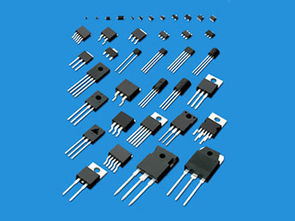How to choose and use resistors?
Nowadays society is inseparable from electronic components. It is inevitable to engage in the electronic work of power supply engineers and to deal with various components. Electronic R&D personnel must consider many parameters of components, so as to ensure the performance of electronic products. Good and not prone to problems; and for most electronic enthusiasts engaged in maintenance, production and simple design, the actual problems can be solved by considering some important parameters of the components.

The resistor selection process is as follows:
① Determine the resistance value. Use Ohm's law to find the resistance of the resistor R=U/I=220V/0.01A=22000Ω=22kΩ.
② Determine the error. For the circuit, the smaller the error, the better. Here, the resistor error is ±5%. If it is difficult to find a resistor with an error of ±5%, a resistor with an error of ±10% can also be selected. When selecting a resistor, the main consideration is the resistance, error, rated power and limit voltage of the resistor. The current I through the resistor R is required to be equal to 0.01A. Please select a suitable resistor to meet the actual requirements of the circuit.
When selecting a resistor, the main consideration is the resistance, error, rated power and limit voltage of the resistor.
③ Determine the power. According to the power calculation formula, the power of the resistor can be calculated as P=I2R=(0.01A)2×22000Ω=2.2W. In order to allow the resistor to be used for a long time, the selected resistor power should be more than twice the actual power . The resistor power selected here is 5W.
④ Determine whether the limit voltage of the selected resistor meets the needs of the circuit. When the resistor is used in a circuit with high voltage and small current, the power may meet the requirements, but if the limit voltage of the resistor is less than the voltage applied to both ends of the circuit, the resistor will be broken down.
The limit voltage of the resistor can be obtained. The limit voltage of the resistor here is V≈331V, which is greater than the 220V applied at both ends and can be used normally. When the pole of the resistor, in order to ensure that the resistor is not broken down in the circuit, a resistor with larger resistance or higher power can be selected according to the situation. In summary, in order for the resistor R in the circuit shown in the figure to work normally and meet the requirements, a resistor with a resistance of 22kΩ, an error of ±5%, and a rated power of 5W should be selected.
Resistor selection skills:
In actual work, it is often encountered that the selected resistor cannot meet the requirements. At this time, the following methods can be used to solve the problem:
①For circuits with low requirements, when selecting a resistor, its resistance and power should be as close as possible to the required value, and the rated power can only be greater than the required value, otherwise the resistor is easy to burn out.
② If a resistor with a certain resistance value cannot be found, it can be solved by using multiple resistors in parallel or in series. The resistance value increases when the resistors are connected in series, and decreases when they are connected in parallel.
③If the power of a certain resistor is not enough, you can use multiple low-power resistors with large resistance in parallel, or use multiple small-resistance and low-power resistors in series. Whether in parallel or in series, each resistor can bear The power will become smaller. As for how much power should be selected for each resistor, it can be calculated with P=U2/R or P=I2R, and then consider a margin of about twice. The above is the selection and use of resistors, we need to continue to sum up experience in practice.
This article is from Allicdata Electronics Limited which offer electronic components, semiconductors, antennas, capacitors, connectors, diodes, transistors, IC,resistors. For more product information, please go to the website to get it.

